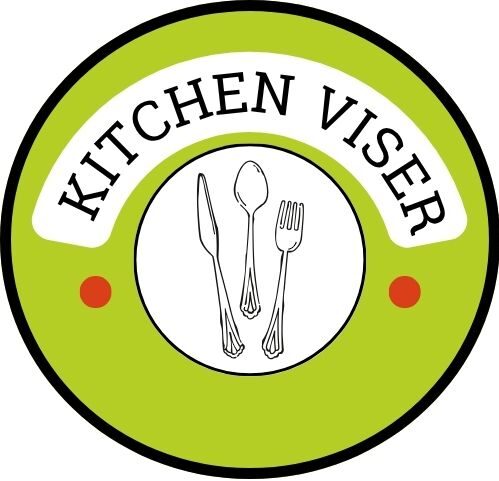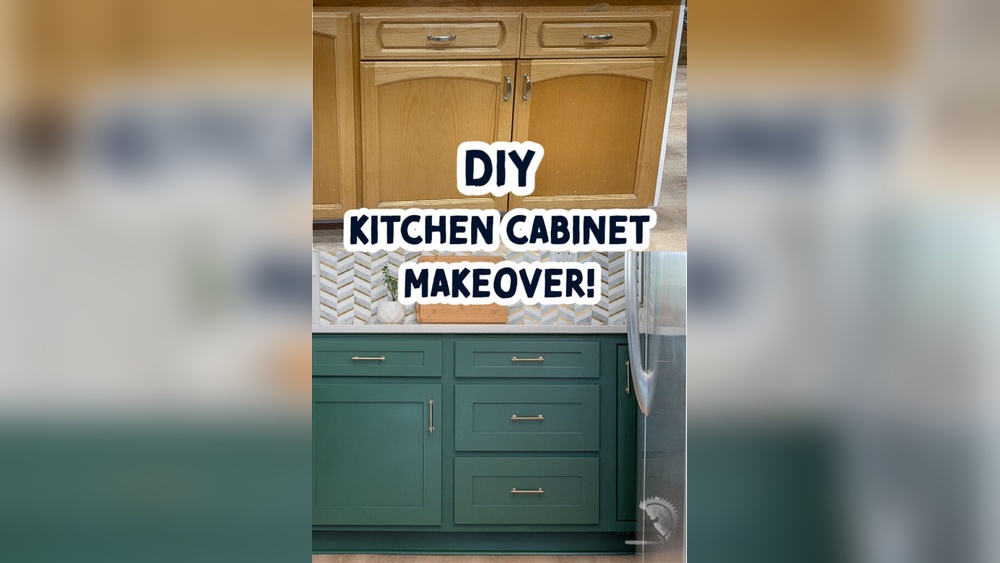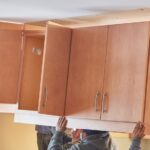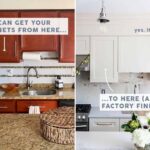Are your kitchen cabinets looking tired and outdated? You don’t have to spend a fortune or go through a full renovation to give your kitchen a fresh new look.
Refacing your kitchen cabinets can be the perfect solution to transform your space quickly and affordably. If you want to know how to reface kitchen cabinets yourself, you’re in the right place. This guide will walk you through simple steps to update your cabinets without the mess and cost of a complete replacement.
Keep reading, and you’ll discover how easy it is to breathe new life into your kitchen, saving both time and money while achieving stunning results you’ll love.
Benefits Of Refacing
Refacing kitchen cabinets costs much less than full replacement. It saves thousands of dollars on materials and labor. The process is quick and easy, often done in a few days. No need to move appliances or plumbing, so the kitchen stays usable. This method keeps the same cabinet layout, which means no extra work on walls or floors.
Refacing lets you update the kitchen’s style without changing its shape. You can choose new doors, veneers, or finishes to refresh the look. It is perfect for fixing worn doors while the cabinet frames stay strong. This approach avoids the mess and hassle of tearing out old cabinets.
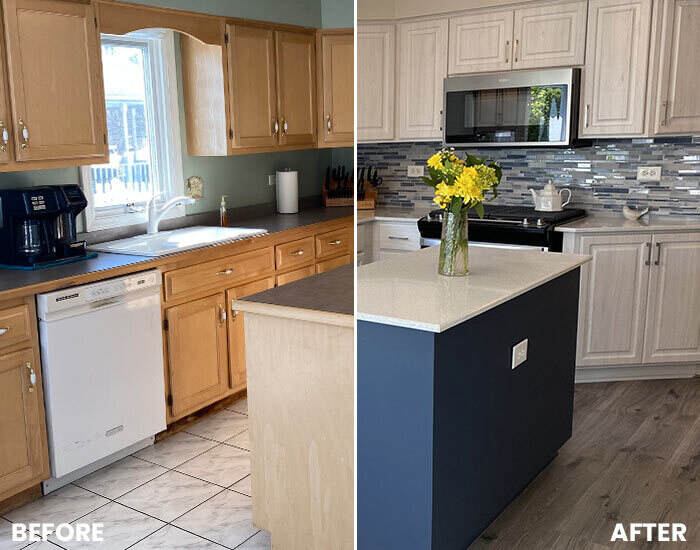
When To Avoid Refacing
Damaged cabinet structures are not suitable for refacing. Refacing only covers the outside surfaces. Cabinets with cracks, warping, or rotting need full replacement. Structural issues can cause poor results and wasted money.
Layout changes require new cabinets. Refacing keeps the same design and shape. If you want to add or move cabinets, refacing won’t help. A full remodel allows for better kitchen flow and new storage options.
High-end renovations often need complete cabinet replacement. Refacing may not meet luxury standards or custom styles. New cabinets offer more material choices and design freedom. This is important for high-value homes or upscale kitchens.
Choosing Materials
Check the durability of existing cabinets before refacing. Cabinets in good shape save time and money. Look for solid wood or plywood. Avoid particleboard or damaged surfaces. These may not hold veneers or paint well.
| Material | Pros | Cons |
|---|---|---|
| Veneers | Natural look, easy to apply | Can peel or chip if not sealed |
| Laminates | Durable, wide color choice | Less natural appearance |
Choose paint and finish based on cabinet use. Semi-gloss paint cleans easily and resists stains. Satin finish hides small flaws well. Always prime surfaces before painting. Seal with a clear coat for protection.
Tools And Supplies
Basic tools for refacing include a screwdriver, measuring tape, and a level. A drill helps with removing and attaching cabinet doors quickly.
Specialized equipment may be needed like a jigsaw or circular saw for cutting new panels. An edge banding machine is useful for smooth finishes on veneer edges.
Safety gear is important. Wear gloves to protect hands and safety goggles to guard eyes from dust and debris. A dust mask helps avoid breathing sawdust.
| Category | Examples |
|---|---|
| Basic Tools | Screwdriver, Measuring Tape, Level, Drill |
| Specialized Equipment | Jigsaw, Circular Saw, Edge Banding Machine |
| Safety Gear | Gloves, Safety Goggles, Dust Mask |
Preparing Cabinets
Start by cleaning the cabinet surfaces well. Use warm water and mild soap to remove grease and dirt. Take off all hardware like handles and hinges carefully. Keep them safe for reuse or replacement.
Next, sand the cabinet doors and frames gently. Use medium-grit sandpaper to roughen the surfaces. This helps new materials stick better. Wipe away dust with a damp cloth after sanding.
Check for small damages like scratches or dents. Use wood filler or putty to repair these spots. Let the filler dry fully before sanding smooth. This step makes the surface even for the new finish.
Applying New Surfaces
Start by measuring the cabinet doors and panels carefully. Use a tape measure and record the exact sizes.
Cut the new panels or veneers to match these dimensions. A fine-toothed saw works best for clean edges.
Next, apply glue or adhesive to the backs of veneers or laminates. Press them firmly onto the cabinet surfaces.
Use clamps or weights to hold panels in place while the glue dries. This ensures strong adhesion without bubbles.
Trim any extra edges using a sharp utility knife or edge trimmer. Make sure the edges are smooth and even.
Finally, sand the edges lightly to remove rough spots. This step gives a professional, finished look to your cabinets.
Replacing Doors And Hardware
Start by measuring the cabinet openings carefully. Measure height, width, and thickness. Write down all numbers.
Next, choose new doors that fit those measurements. Doors must match the cabinet style and size.
Installing hinges comes next. Attach hinges to the new doors first. Then fix doors to the cabinet frame. Make sure hinges are tight and secure.
For handles, mark where you want them. Drill holes carefully and attach the handles with screws. Choose handles that suit your kitchen design.
Finally, check door alignment. Doors should open and close smoothly. Adjust hinges if doors are uneven or too tight.
Take your time with these steps. Proper fitting and alignment make cabinets look neat and last longer.
:max_bytes(150000):strip_icc()/cabinet-refacing-demystified-1822044-v3-e2dabd6aceb543fca7fd1302e9aecf3b.png)
Adding Final Touches
Install toe kicks and molding carefully to finish the look. Toe kicks cover the base of cabinets and protect your feet. Molding adds style and hides gaps. Use a caulk gun to fill small cracks between molding and walls. This makes the edges look smooth and neat.
Apply touch-up paint on any chipped or rough spots. This step helps cabinets look fresh and new. Let the paint dry well before moving on.
Clean all surfaces with a soft cloth and mild cleaner. Polishing the cabinets gives them a nice shine. It also protects the finish and keeps dirt away.
Cost Breakdown
Material costs for refacing kitchen cabinets usually include veneer, laminate, or wood panels. Average prices range from $100 to $600, depending on quality and style. Hardware like new handles or hinges can add $50 to $200. Adhesives and tools might cost $30 to $100.
Labor considerations depend on whether you hire a professional or DIY. Professionals charge around $50 to $100 per hour. Total labor can reach $300 to $1,000. DIY reduces costs but needs time and skill.
| Cost Type | Typical Range |
|---|---|
| Materials | $100 – $600 |
| Hardware | $50 – $200 |
| Labor | $300 – $1,000 |
| Total | $450 – $1,800 |
Potential savings come from avoiding full cabinet replacement. Refacing costs less and takes less time. It can increase kitchen value without major changes. Choosing DIY can save hundreds of dollars. Careful planning helps avoid extra expenses.
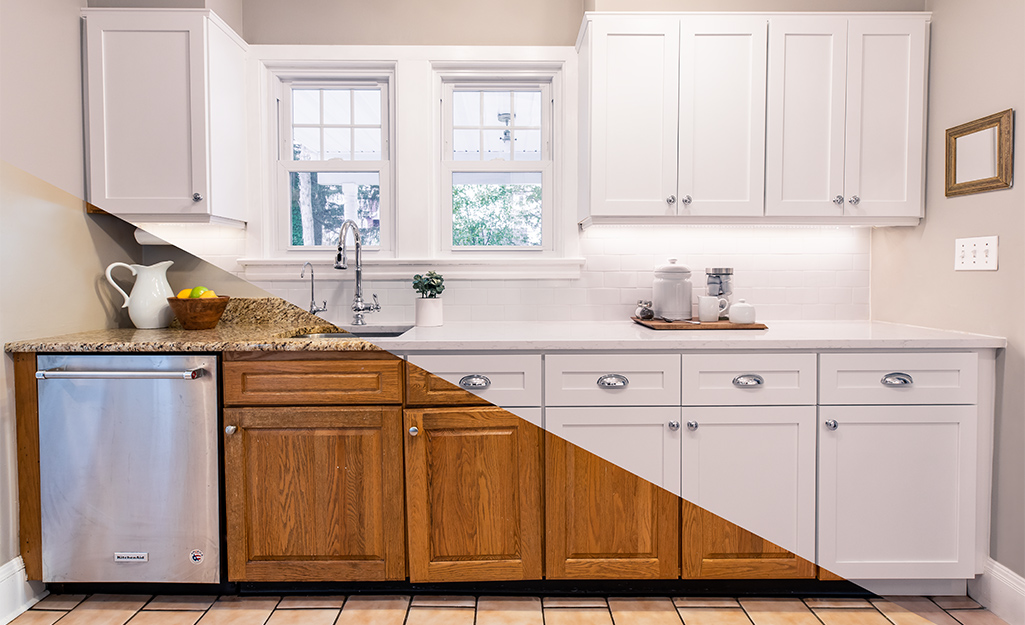
Maintaining Refaced Cabinets
Clean refaced cabinets gently using a soft cloth and mild soap. Avoid harsh chemicals that can damage the surface. Wipe spills immediately to prevent stains and warping.
Protect cabinets from water and heat damage by using coasters and hot pads. Avoid leaning or placing heavy objects on cabinet doors. Use handles to open doors instead of pulling on edges.
| When to Refinish | When to Repair |
|---|---|
| Surface scratches and dull finish | Loose hinges or handles |
| Faded or worn veneer | Cracks or chips in the door |
| Minor color changes | Broken cabinet boxes or frames |
Frequently Asked Questions
Is It Worth It To Reface Kitchen Cabinets?
Refacing kitchen cabinets is worth it if cabinet boxes are solid and you want a fresh look affordably. It saves time and money compared to full replacement. Avoid refacing if cabinets are damaged or you need layout changes, as replacement offers better functionality and durability.
What Is The Best Material For Refacing Cabinets?
The best material for refacing cabinets is thermofoil or wood veneer. They offer durability, affordability, and a smooth finish. Thermofoil resists moisture well, while wood veneer provides a natural, elegant look. Both enhance cabinet appearance quickly without full replacement.
Can I Just Paint Over My Kitchen Cabinets Without Sanding?
You can paint kitchen cabinets without sanding only if the surface is clean and glossy. Light sanding improves paint adhesion and durability. Skipping sanding may cause peeling or uneven finish. For best results, clean, sand lightly, then prime before painting.
How Expensive Is It To Reface Kitchen Cabinets?
Refacing kitchen cabinets typically costs between $1,000 and $9,000. Prices vary by kitchen size, materials, and labor. This option is cheaper than full replacement and updates your kitchen’s look quickly. Choosing quality materials and professional installation ensures lasting results and value.
Conclusion
Refacing kitchen cabinets can refresh your kitchen without much hassle. It saves money and time compared to full replacements. Make sure your cabinet boxes are sturdy before starting. Choose colors and finishes that match your style. Follow the steps carefully to get smooth, lasting results.
A well-done refacing project improves your kitchen’s look and feel. Enjoy your updated space with minimal mess and expense. Simple changes can make a big difference in your home’s heart.

Yes, working as , Food Blogger and Product Reviewer for last 6 years. Here you will get amazing deals for Smart kitchen products. I am your best source for the latest update in cooking trends. I provide insightful articles, reviews, and analysis on cutting-edge kitchen gadget. My mission is to empower readers with the knowledge they need to stay ahead in a rapidly evolving coking world. Join me as we explore the future of food technology and how it shapes our lives today and tomorrow.
